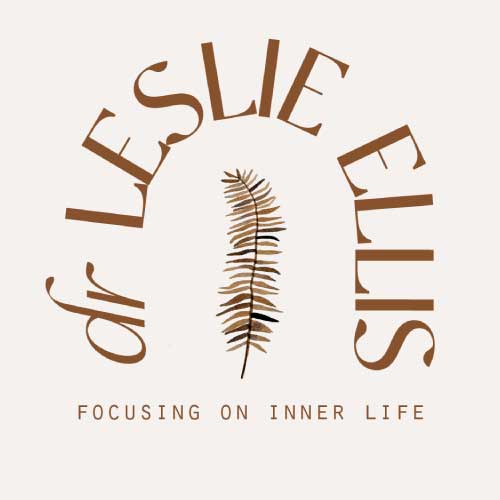A multinational study concludes that dreams are a reflection of massive collective trauma, and that dreams and dream recall must be integrated into approaches for improving mental health and health in general.
By Dr. Leslie Ellis
Since the beginning of the COVID-19 pandemic, the world has collectively been dreaming more, and our dreams have reflected the rise in stress levels, fear and uncertainty. A group of 23 researchers from 14 countries teamed up to take an in-depth look at how the pandemic has affected our dream recall and how this impacts health and mental health. They conclude that dreams are “an often-forgotten expression of the existential situation of individuals” and that they need to be integrated into how we understand and support mental health.
A recent multinational study of more than 19,000 adults explored the associations between dream recall frequency and related social, health and mental health factors, comparing data prior to and during the pandemic across four continents and 14 countries. Higher dream recall was linked with nightmares, sleep talking, recurrent disturbing thoughts and PTSD symptoms. As in previous studies, this one showed that women have been affected more than men, but also that those aged 55-64 had lower dream recall than younger people.
While the higher intensity of emotion during the pandemic has generated more dream recall — associated with more PTSD symptoms, problems with sleep maintenance, more nightmares and parasomnias — there is one interesting finding that bears further inquiry. Contrary to earlier studies, in the one, high dream recall was negatively associated with depression and anxiety. This could be because dreaming can help regulate the strong emotions people are experiencing in these turbulent times. However, the authors speculate that it could also be the result of the dream-dampening effect of anti-depressant medication. They said not enough specific data was collected to solve this riddle.
The study’s authors wrote: “The COVID-19 crisis has touched every person in the world in some way, whether it is related to becoming infected, suffering financially, through reduced social contacts, missed opportunities, or an inability to get required supplies and materials. It has become a communal trauma that has a profound impact on people around the world. One of the most difficult aspects of the pandemic is social isolation and confinement. Solitude goes against our inborn social instincts to form and maintain relationships as human beings and live in herd- or swarm-like alignments. Recent research has shown that the pandemic has led to increased anxiety levels, panic attacks, irrational fears, post-traumatic stress, depression, fatigue, reduced sleep quality, and sleep disturbances. Given the effects it has had on our everyday lives, perhaps it is unsurprising that COVID-19 has crept into our dreams.”
Earlier, smaller studies in various parts of the world (China, Italy, USA) have corroborated the findings that our dreams have been more intense and frequent during the pandemic, and that there are differences in how men and women have been dreaming. For example, a US study found that women with higher education were affected more than others, and several Italian studies showed that while all of us have experienced an increase in dream recall, women have been more affected.
“Since the pandemic has reportedly led to worsened mental health and higher levels of depression, anxiety, distress and symptoms of PTSD, heightened dream recall frequency might be an expression of the current mental health status,” according to the study authors. Women may be more affected as they have had to face more of the load – including increased childcare and health care responsibilities and greater job losses.
In their concluding comments, the authors called for more attention to dreams in mental health care and in general. “Dreams and dream activity are an often-forgotten expression of the existential situation of individuals. Based on our results, we assume that disruption in sleep patterns due to changes caused by the pandemic explains the increase in dream recall. Additionally, we propose that the observed increased dream recall frequency in our sample is an expression of the emotional intense and demanding experience of the current situation and could be an indicator that the pandemic is indeed turning into a collective trauma… Therefore, dreams and dream recall deserve more attention as potential support for coping with crisis situations, such as the COVID-19 pandemic and overall in supporting psychological wellbeing. Dreams and dream recall need to be accepted more and integrated into approaches for improving mental health and health in general.”
If you are a mental health professional interested in learning more about nightmares, parasomnias, and their treatment, sign up for my short, focused online course. Because I feel this material is important to disseminate, the course is always open, is self-paced, and discounted during the pandemic. Please ask your clients if they have nightmares, and let them know they are treatable.
Check out the Short Focused Course on Nightmare Treatment using THIS LINK.
References
Fränkl E, Scarpelli S, Nadorff MR, Bjorvatn B, Bolstad CJ, Chan NY, Chung F, Dauvilliers Y, Espie CA, Inoue Y, Leger D, Macêdo T, Matsui K, Merikanto I, Morin CM, Mota-Rolim S, Partinen M, Penzel T, Plazzi G, Sieminski M, Wing YK, De Gennaro L, Holzinger B. How our Dreams Changed During the COVID-19 Pandemic: Effects and Correlates of Dream Recall Frequency – a Multinational Study on 19,355 Adults. Nat Sci Sleep. 2021;13:1573-1591
https://doi.org/10.2147/NSS.S324142
Iorio I, Sommantico M, Parrello S. Dreaming in the time of COVID-19: a quali-quantitative Italian study. Dreaming. 2020;30(3):199–215. doi:10.1037/drm0000142
Nielsen T. Infectious dreams. How the COVID-19 pandemic is changing our sleeping lives. Sci Am. 2020;323:31–35.
Pesonen A-K, Lipsanen J, Halonen R, et al. Pandemic dreams: network analysis of dream content during the COVID-19 lockdown. Front Psychol. 2020;11:2569. doi:10.3389/fpsyg.2020.573961
Scarpelli S, Alfonsi V, Mangiaruga A, et al. Pandemic nightmares: effects on dream activity of the COVID-19 lockdown in Italy. J Sleep Res. 2021;e13300. doi:10.1111/jsr.13300
Schredl M, Bulkeley K. Dreaming and the COVID-19 pandemic: a survey in a U.S. sample. Dreaming. 2020;30(3):189–198. doi:10.1037/drm0000146

